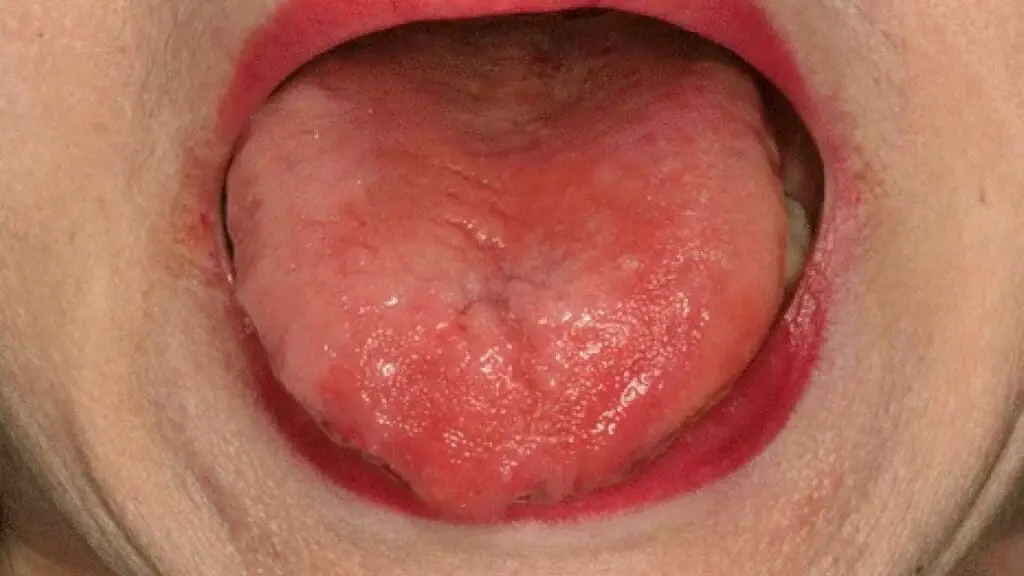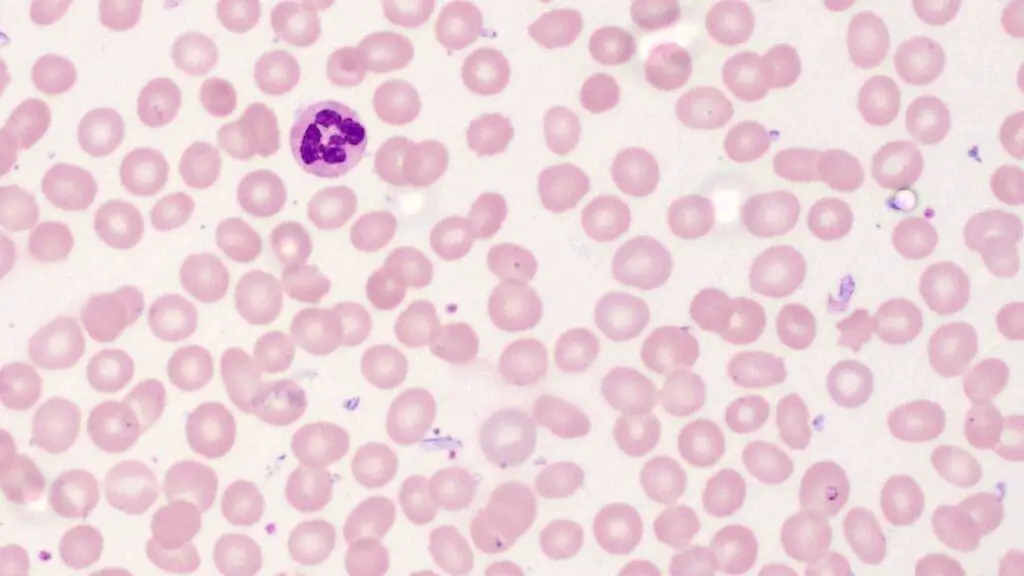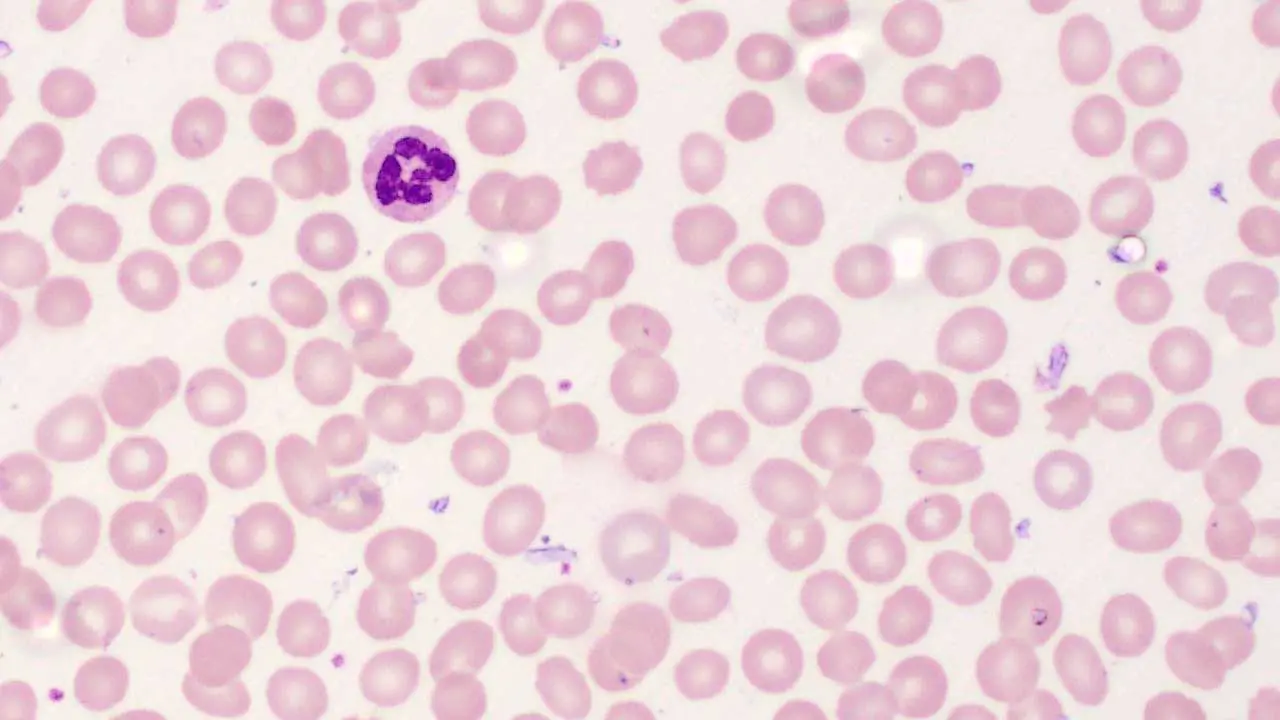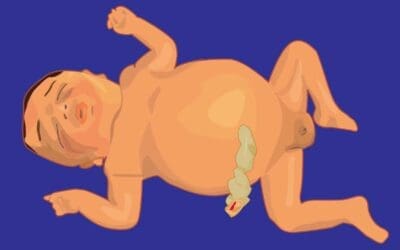TL;DR
Folate deficiency occurs when your body doesn’t have enough folate, a B vitamin essential for DNA synthesis, red blood cell production, and healthy cell division.
Folate Deficiency Symptoms ▾
Early signs can be subtle, but may include:
- Fatigue and weakness
- Headache
- Difficulty concentrating and irritability
- Pale skin
- Shortness of breath
More severe deficiency can lead to:
- Glossitis (inflamed tongue)
- Mouth sores
- Diarrhea
- Numbness and tingling (peripheral neuropathy)
- Depression and confusion
Causes ▾
- Inadequate dietary intake (not enough folate-rich foods)
- Impaired absorption (celiac disease, chronic diarrhea)
- Increased requirements (pregnancy, lactation)
- Medications (anticonvulsants, antifolates)
- Other causes (alcoholism, liver disease)
Complications (if untreated) ▾
- Neural tube defects (birth defects in the developing brain and spinal cord) in babies born to women with deficiency
Laboratory Investigations ▾
- Blood tests (serum folate level, red blood cell indices)
Treatment ▾
- Folic acid supplementation
- Addressing the underlying cause
Prevention ▾
- Balanced diet rich in folate-containing foods (leafy greens, fruits, legumes, nuts)
- Folic acid fortification in staple foods (cereals, breads)
- Supplementation for specific groups (women of childbearing age, pregnant/lactating women, individuals with increased needs)
*Click ▾ for more information
Introduction
Folate deficiency occurs when your body doesn’t have enough folate to carry out its essential functions. This deficiency is surprisingly prevalent, affecting a significant portion of the population. While often mild in its early stages, folate deficiency can lead to a range of health problems if left untreated.
B vitamins are a group of essential nutrients that play a critical role in various bodily functions, including energy production, nervous system health, and cell growth. Among these B vitamins, folate (also known as vitamin B9) stands out for its crucial role in DNA synthesis and red blood cell formation.
Folate vs. Folic Acid: Understanding the Difference
Folate is the naturally occurring form of vitamin B9 found in a variety of foods. Leafy green vegetables, legumes, fruits like oranges and papayas, nuts, and fortified cereals are all good sources of folate. Folate exists in various chemical forms within these foods, but they all share a similar core structure.
Folic acid, on the other hand, is the synthetic form of vitamin B9. It’s widely used in dietary supplements and for fortification of processed foods like bread, flour, and breakfast cereals. In summary,
- Folate is readily available for the body to absorb and utilize.
- Folic acid requires conversion in the liver to the active form that the body can use. This conversion process can be inefficient in some individuals.
Pathogenesis of Folate Deficiency
Folate plays a critical role in several fundamental cellular processes that keep our body functioning optimally. One of its most essential functions is in DNA synthesis. Folate acts as a building block for the nucleotides that make up DNA, the genetic blueprint for every cell. Without adequate folate, DNA synthesis becomes impaired, leading to problems with cell growth, repair, and division. This can manifest in various ways, including folate deficiency symptoms like fatigue and weakness, as the body struggles to keep up with its cellular demands.
Another key function of folate is in red blood cell maturation. Folate is essential for the production of healthy red blood cells, which carry oxygen throughout the body. When folate is deficient, red blood cell production becomes abnormal, resulting in the development of megaloblastic anemia. This type of anemia is characterized by large, immature red blood cells that are less efficient at oxygen transport. Symptoms of megaloblastic anemia, which can also be indicative of folate deficiency, include fatigue, shortness of breath, and pale skin.
Causes of Folate Deficiency
- Inadequate dietary intake: This is a common cause, particularly among individuals who don’t consume enough folate-rich foods like leafy green vegetables, fruits, and legumes.
- Impaired absorption: Conditions like celiac disease or chronic diarrhea can hinder the body’s ability to absorb folate from food, even with adequate intake.
- Increased requirements: Pregnancy and lactation significantly increase the body’s demand for folate to support fetal development and milk production. Women of childbearing age are particularly susceptible to deficiency if they don’t meet these heightened needs.
- Medications: Certain medications, such as anticonvulsants and antifolate drugs used in cancer treatment, can interfere with folate metabolism and contribute to deficiency.
- Other causes: Alcoholism and liver disease can also impair folate absorption and utilization, putting individuals at risk for deficiency.
Folate Deficiency Symptoms and Signs
Folate deficiency can manifest in a wide range of signs and symptoms, and their severity often correlates with the degree of deficiency. It’s important to note that these symptoms can sometimes overlap with deficiencies of other B vitamins. Early detection and treatment are crucial to prevent complications.
Common Folate Deficiency Symptoms
- Fatigue and weakness: These are some of the earliest and most frequent folate deficiency symptoms. They occur because folate is essential for energy production at the cellular level. When folate is deficient, the body struggles to produce enough energy, leading to tiredness and lack of stamina.
- Headache: Folate deficiency can disrupt blood flow and oxygen delivery to the brain, potentially contributing to headaches.
- Difficulty concentrating and irritability: Folate is involved in the synthesis of neurotransmitters, which are chemical messengers in the brain. When folate is low, neurotransmitter imbalances can occur, affecting mood, focus, and cognitive function.
- Pale skin: This is a hallmark sign of anemia, a condition that often develops due to folate deficiency. Red blood cells are responsible for carrying oxygen throughout the body. When folate is deficient, red blood cell production becomes abnormal, leading to anemia. This can cause pale skin due to a decrease in the number of red blood cells circulating in the bloodstream.
- Shortness of breath: As anemia progresses due to folate deficiency, the body may not receive enough oxygen. This can cause shortness of breath, especially during exertion.
Less Common Folate Deficiency Symptoms and Signs (may occur in moderate to severe deficiency)

- Glossitis (inflamed tongue): The tongue may become smooth, red, and painful due to folate deficiency.
- Mouth sores: Sores or ulcers may develop on the lips or inside the mouth.
- Diarrhea: Folate deficiency can disrupt the digestive system, leading to diarrhea.
- Numbness and tingling (peripheral neuropathy): In severe cases of folate deficiency, damage to nerves can occur, causing numbness, tingling, or burning sensations in the hands and feet.
- Depression and confusion: Folate is essential for brain health. Severe deficiency can lead to mood changes, depression, and even confusion.
Folate Deficiency and Birth Defects
Folate deficiency during pregnancy is a well-established risk factor for a specific type of birth defect called neural tube defects (NTDs). Folate plays a critical role in DNA synthesis and cell division, which are essential processes during early fetal development. When a pregnant woman has inadequate folate levels, these crucial processes can be disrupted, increasing the risk of malformations in the developing neural tube.
NTDs occur during early fetal development (within the first few weeks) when the neural tube, which forms the brain and spinal cord, fails to close properly. This can lead to a range of serious complications, including:
- Spina bifida: Incomplete closure of the spinal column, which can cause nerve damage, paralysis, and other disabilities.
- Anencephaly: The most severe NTD, where a significant portion of the brain and skull is missing.
Fortunately, the risk of NTDs can be significantly reduced by ensuring adequate folate intake during pregnancy. This is why healthcare providers recommend folic acid supplementation for all women of childbearing age, even before conception. Folic acid, the synthetic form of folate, is readily absorbed by the body and helps prevent folate deficiency.
Laboratory Investigations for Folate Deficiency
Serum Folate Level: This test measures the amount of folate circulating in the blood. Generally, a serum folate level below 5 ng/mL is considered indicative of deficiency. However, borderline levels may require additional testing. Limitations for serum folate level include:
- Recent Dietary Intake: Recent dietary intake can influence serum folate levels, making them a less reliable indicator of long-term folate stores.
- Inflammation: Inflammation in the body can falsely elevate serum folate levels, masking potential deficiency.
Red Blood Cell (RBC) Folate Level: This test provides a better assessment of long-term folate stores compared to serum levels. However, it requires specialized techniques and may not be readily available in all labs. Additionally, recent blood transfusions can interfere with the accuracy of RBC folate levels.
Complete Blood Count (CBC): While not a direct test for folate deficiency, a CBC can reveal abnormalities suggestive of the condition. These include:
- Macrocytosis: Increased mean corpuscular volume (MCV) in red blood cells, indicating abnormally large red blood cells, a hallmark of megaloblastic anemia.
- Anemia: Decreased hemoglobin and hematocrit levels, signifying a reduction in red blood cell count or hemoglobin content.
Peripheral Blood Smear: This microscopic examination of blood cells can support the diagnosis of megaloblastic anemia by revealing the presence of abnormally large and immature red blood cells.

Other Tests (May be used to rule out differential diagnoses):
- Vitamin B12 Level: Vitamin B12 deficiency can cause similar symptoms and blood abnormalities to folate deficiency. Measuring vitamin B12 levels can help differentiate between the two conditions.
- Methylmalonic Acid (MMA) and Homocysteine Levels: Elevated levels of these substances can indicate vitamin B12 deficiency or folate deficiency. However, the interpretation of these tests can be complex.
Folate Deficiency Treatment and Management
Folate deficiency is fortunately a treatable condition. The primary approach involves addressing the underlying cause and replenishing folate stores in the body.
Folic Acid Supplementation: The cornerstone of treatment is folic acid supplementation. Folic acid, the synthetic form of folate, is readily absorbed by the body and effectively corrects the deficiency. The dosage of folic acid will vary depending on the severity of the deficiency and the presence of anemia. Typically, a daily dose of 400 to 1000 micrograms (mcg) is recommended for adults.
Addressing the Underlying Cause: If there’s an identifiable cause for the deficiency, such as inadequate dietary intake, malabsorption, or medication interference, addressing it is crucial to prevent future deficiencies. This might involve dietary modifications to increase folate-rich foods, investigating and treating conditions like celiac disease, or adjusting medications if possible.
Monitoring and Follow-Up: Folate blood tests can be used as regular monitoring of folate levels and is essential to track progress and ensure adequate response to treatment. Serum folate levels and red blood cell indices are typically monitored to assess the effectiveness of the supplementation. The frequency of follow-up will depend on the severity of the deficiency and the patient’s response to treatment.
Dietary Considerations (Optional): While supplementation is the primary treatment, incorporating a healthy diet rich in natural folate sources can further support recovery. Leafy green vegetables (spinach, kale), fruits (oranges, papayas), legumes (beans, lentils), nuts, and fortified foods like cereals and breads are excellent sources of folate.
Additional Considerations (Pregnant Women): For pregnant women or women planning to become pregnant, folic acid supplementation is crucial even before conception. Adequate folate levels can significantly reduce the risk of neural tube defects in the developing fetus.
Important Note: While folic acid supplementation is highly effective for treating folate deficiency, it’s important to be aware of a potential complication – masking vitamin B12 deficiency. Vitamin B12 deficiency can cause similar neurological symptoms to folate deficiency. In some cases, high doses of folic acid can mask the underlying B12 deficiency, potentially delaying diagnosis and treatment. Therefore, a healthcare professional may recommend additional testing for vitamin B12 levels, especially in individuals with a high risk of B12 deficiency (e.g., older adults, vegetarians, individuals with certain digestive disorders).
Prevention of Folate Deficiency
Targeted Supplementation for Specific Needs
While a balanced diet and fortified foods are crucial, certain groups may benefit from additional support through folic acid supplementation.
Women of Childbearing Age (15-49 years): This group is especially emphasized due to the critical role of folate in preventing neural tube defects (NTDs) in developing fetuses. The CDC recommends all women of childbearing age consume 400 micrograms (mcg) of folic acid daily, ideally starting at least one month before conception and continuing throughout the first trimester. This can significantly reduce the risk of NTDs.
Pregnant and Lactating Women: Folate needs increase during pregnancy and lactation to support both the mother’s and baby’s health. Pregnant women are typically advised to increase their daily folic acid intake to 600 mcg, while lactating women may need 500 mcg daily.
Individuals with Increased Folate Requirements: Certain conditions or situations can increase folate needs, making supplementation beneficial. This includes people with:
- Chronic illnesses affecting absorption (celiac disease, kidney disease)
- Medications interfering with folate metabolism (anticonvulsants)
- A history of alcohol abuse or liver disease
Adults Over 50: Folate absorption tends to decrease with age. While dietary sources are still important, some adults over 50 may benefit from a daily folic acid supplement of 400 mcg.
Frequently Asked Questions (FAQs)
Is B12 and folate deficiency the same?
No, B12 and folate deficiency, while having some overlapping symptoms, are not the same. Both are B vitamins essential for various bodily functions, but they have distinct roles and sources.
Folate deficiency occurs when your body lacks enough folate (vitamin B9), which plays a crucial role in DNA synthesis, cell division, and red blood cell production. It’s commonly caused by inadequate dietary intake or malabsorption issues. Symptoms can include fatigue, weakness, headaches, and anemia.
B12 deficiency happens when your body lacks vitamin B12, which is primarily found in animal products. It’s vital for nerve function and red blood cell formation. Symptoms can be similar to folate deficiency, but also include numbness, tingling, and even neurological problems. Additionally, B12 deficiency can be masked by high doses of folic acid, making proper diagnosis crucial.
What happens if you have low B12 and folic acid?
Deficiencies in both vitamin B12 and folate can have significant health consequences, and the combined effects can be more severe than either deficiency alone. \
Overlapping and Additional Symptoms
Many symptoms of B12 and folate deficiency overlap, including:
- Fatigue and weakness
- Headache
- Difficulty concentrating and irritability
- Pale skin
- Shortness of breath
However, B12 deficiency can also lead to more specific neurological symptoms that folate deficiency wouldn’t typically cause, such as
- Numbness and tingling (peripheral neuropathy)
- Balance problems
- Vision problems
- Memory loss
- Depression
Masking Effect of Folic Acid
A potential danger is that high doses of folic acid can mask the underlying B12 deficiency. While folic acid can correct the megaloblastic anemia (large, abnormal red blood cells) associated with B12 deficiency, it doesn’t address the nerve damage that can occur with B12 deficiency. This can lead to delayed diagnosis and treatment of B12 deficiency, potentially worsening neurological problems.
Importance of Differentiating Deficiencies
Because of the masking effect and potential for more severe neurological complications, it’s crucial to differentiate between B12 and folate deficiency. This is why a healthcare professional will likely order tests for both vitamins when investigating symptoms suggestive of deficiency.
Can folate deficiency cause low platelets?
Folate deficiency can indeed contribute to low platelets, a condition called thrombocytopenia. Folate is essential for healthy cell division, including the production of platelets in your bone marrow. When folate levels are low, this critical cell division process can become impaired, leading to a decrease in the number of platelets circulating in the bloodstream. This can increase the risk of excessive bleeding or bruising. Early diagnosis and treatment of folate deficiency with folic acid supplementation can help restore normal platelet production.
Disclaimer: This article is intended for informational purposes only and is specifically targeted towards medical students. It is not intended to be a substitute for informed professional medical advice, diagnosis, or treatment. While the information presented here is derived from credible medical sources and is believed to be accurate and up-to-date, it is not guaranteed to be complete or error-free. See additional information.
References
- Anemia: Diagnosis and Treatment (Willis, 2016).
- Management of Anemia: A Comprehensive Guide for Clinicians (Provenzano et al., 2018)
- Goldberg S, Hoffman J. Clinical Hematology Made Ridiculously Simple, 1st Edition: An Incredibly Easy Way to Learn for Medical, Nursing, PA Students, and General Practitioners (MedMaster Medical Books). 2021.
- Zhao G, Ford ES, Li C, Greenlund KJ, Croft JB, Balluz LS. Use of folic acid and vitamin supplementation among adults with depression and anxiety: a cross-sectional, population-based survey. Nutr J. 2011 Sep 30;10:102. doi: 10.1186/1475-2891-10-102. PMID: 21962075; PMCID: PMC3200167.
- Khan KM, Jialal I. Folic Acid Deficiency. [Updated 2023 Jun 26]. In: StatPearls [Internet]. Treasure Island (FL): StatPearls Publishing; 2024 Jan-.
- Viswanathan M, Urrutia RP, Hudson KN, Middleton JC, Kahwati LC. Folic Acid Supplementation to Prevent Neural Tube Defects: Updated Evidence Report and Systematic Review for the US Preventive Services Task Force. JAMA. 2023 Aug 1;330(5):460-466. doi: 10.1001/jama.2023.9864. PMID: 37526714.




